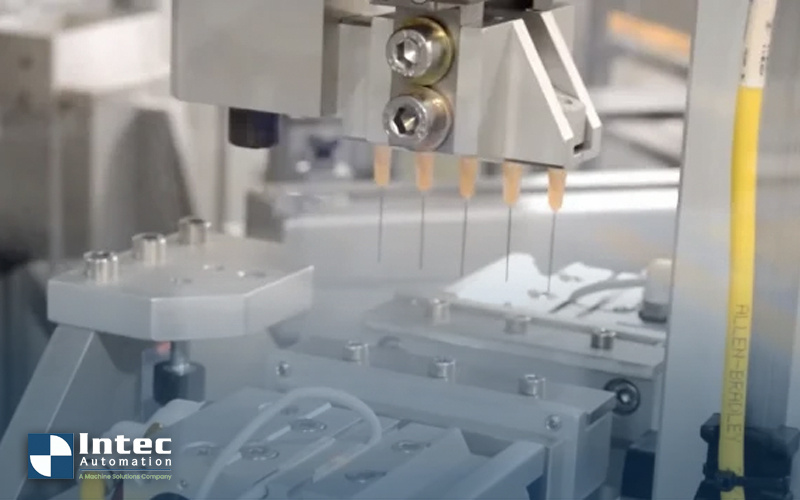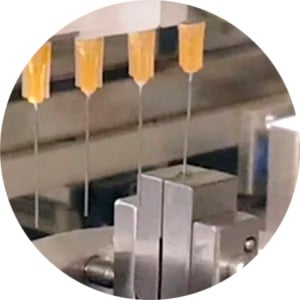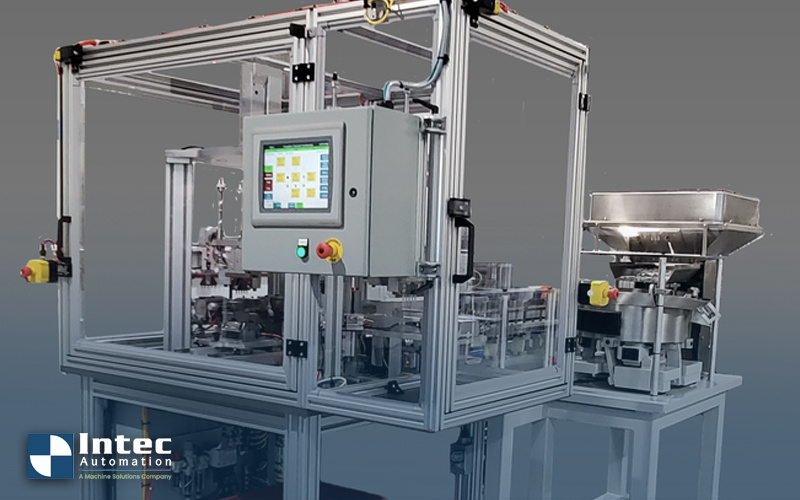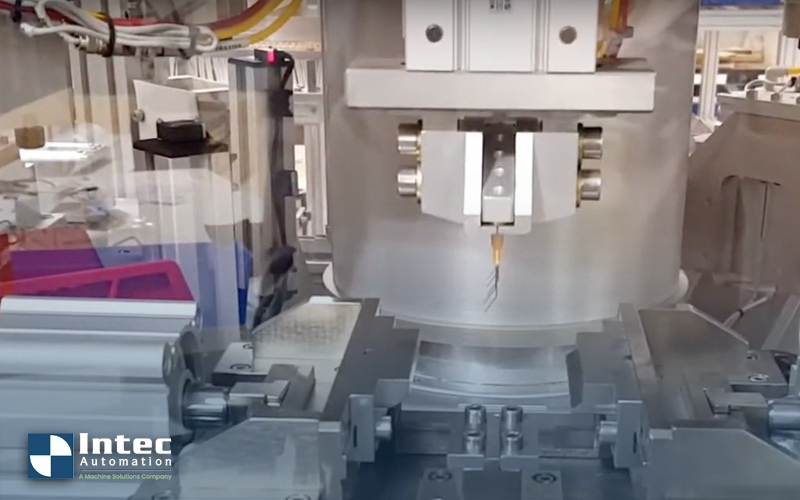Case Study: Service and Support With Tier-1 Medical Device Manufacturing Project
Here is a case study video from a tier-1 medical manufacturer discussing the impacts of reliable service and support that Intec Automation provided...
2 min read
 John A. Weismantel
:
Jun 12, 2024 8:30:00 AM
John A. Weismantel
:
Jun 12, 2024 8:30:00 AM

Here is a case study video from a tier-1 medical manufacturer discussing the process of converting their manual cannula-forming process to an automated operation. Intec Automation provided this medical manufacturer with the design, equipment, automation, and build of this project. Below we transcribed the text from the video as well.
We have 30 different types of jobs or recipes going on in a machine. With the manual operation, when you want to switch from one job to another it could easily take up to a couple of hours to interchange (or complete the changeover process).
Whereas with this Intec automated machine, everything is bottomed out and we only need one set of toolings and two Allen keys to do the whole setup process. Again with the manual operation and machine, we would be using various amounts of spanners, and several different Allen keys. We are going from one extreme with a manual process taking an hour to now with the automated solution it takes 2-3 minutes to convert processes.
Labor, to actually run the automation is the same. It’s just one person but the labor you have to protect the parts is significant.
Cycle time, the old machine was producing about a thousand parts an hour and now with the automated machine, it is three times faster. For every part, we are probably saving 5-6 seconds easily. We are saving a hell of a lot of time there. And having millions of parts, it really adds up. It's unbelievable it gives us so much time to concentrate on other areas that you want to work on that require higher-skilled labor.
 With only 5-10 minutes to complete the whole setup, it’s incredible. We can go from an angled product to a radius product in that time. Whereas with the manual operation, we could spend 2 hours on a machine doing tweaks and adjustments, and now on this automated machine we put the tooling on, select the job we want and it's done within minutes. The time it gives back to the engineering team is unbelievable. Now, we can run a job for example bending a medical needle that used to take us 2 weeks and we run it within a couple of days and we're back into doing a changeover for the next cannula forming process. It's a pleasure to work on the machine. We don't have that headache where we’re going “Oh god I don’t want to touch this”. We feel confident that it’s going to be right every time. It's going to give us the right tolerances that we want for the job. The product is very, very stable. We don't have to be worried about it, we know it’s not going to change. It’s repeatable and much more consistent. It wasn't uncommon on the old, manual system that halfway through a job we would be called in for an issue with an angle or flattening aspect for the cannula-forming process. We haven’t had that on the new, automated machine. It’s fantastic in that sense. We can set a job and it stays set.
With only 5-10 minutes to complete the whole setup, it’s incredible. We can go from an angled product to a radius product in that time. Whereas with the manual operation, we could spend 2 hours on a machine doing tweaks and adjustments, and now on this automated machine we put the tooling on, select the job we want and it's done within minutes. The time it gives back to the engineering team is unbelievable. Now, we can run a job for example bending a medical needle that used to take us 2 weeks and we run it within a couple of days and we're back into doing a changeover for the next cannula forming process. It's a pleasure to work on the machine. We don't have that headache where we’re going “Oh god I don’t want to touch this”. We feel confident that it’s going to be right every time. It's going to give us the right tolerances that we want for the job. The product is very, very stable. We don't have to be worried about it, we know it’s not going to change. It’s repeatable and much more consistent. It wasn't uncommon on the old, manual system that halfway through a job we would be called in for an issue with an angle or flattening aspect for the cannula-forming process. We haven’t had that on the new, automated machine. It’s fantastic in that sense. We can set a job and it stays set.
In about 6-7 weeks we hit the one million mark for parts made. We saved a million manual operations!

Here is a case study video from a tier-1 medical manufacturer discussing the impacts of reliable service and support that Intec Automation provided...

Automation is adding new efficiencies across every manufacturing sector due to a constrained labor market. For medical manufacturers, the growing...

Assessing the potential that automation has to offer requires a detailed evaluation of your current processes against the latest integrated...